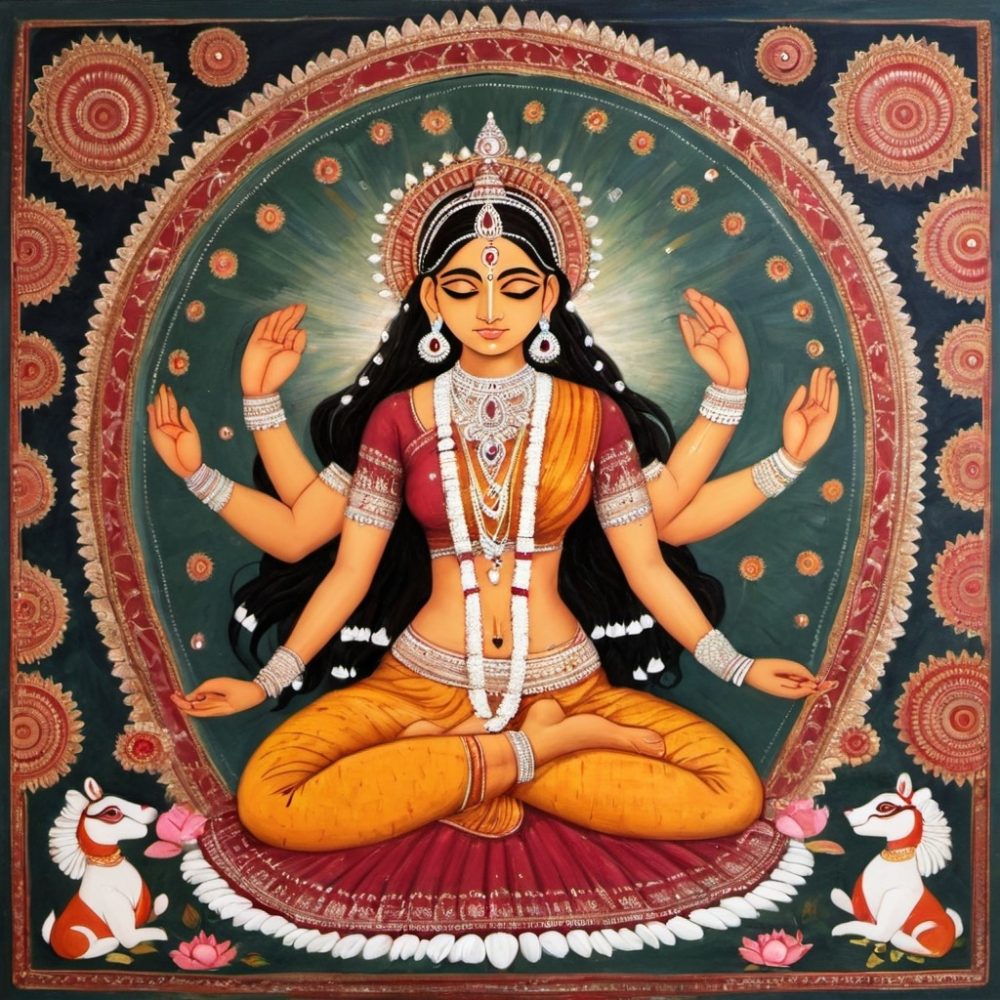
Mental Health and the Healing Power of Indian Classical Arts
Recommended for Mental Health
Mental Health Awareness is the perfect topic to explore the therapeutic effects of Indian classical arts. Let’s delve into the world of movement, mudras, and music, and discover how these ancient practices can heal and rejuvenate our minds.
The Science Behind the Art
Picture this: a young student, their little hand contorted into a 2,000-year-old mudra, guided by the gentle voice of their teacher. As fingertips touch and neurons fire, their young brain experiences neuroplasticity, the incredible ability to change and grow through the reorganization of its neural networks.
This process, fundamental to learning and adaptation, highlights the profound impact of movement on mental health.
Indian classical dance isn’t just an art form; it’s a science-backed therapy. Prestigious institutions like Sarah Lawrence University and the National Institutes of Health have documented the mental health benefits of classical dance.
Classical music has also been well-researched as a complementary treatment for various disorders and a practice for overall well-being.
Imagine comparing the brain scans of individuals who walked on a treadmill for six months to those who took ballroom dancing classes. The results were fascinating – dancing was found to prevent cognitive decline and reduce the risk of Alzheimer’s, showcasing the profound connection between physical movement and mental health.
Mudras: The Language of the Hands
In Indian classical dance, mudras play a pivotal role. These hand gestures are not only beautiful but also neurobiologically complex. The precise hand-eye coordination in mudras demonstrates the brain’s neuroplasticity.
This ancient hand language enhances memory and protects neural function, showcasing the depth of mental engagement required. Laura Wimberger, a neurological meditation practitioner, developed neurosculpting.
This method involves moving the left and right hands in different directions and holding various gestures. Neurosculpting enhances memory, protects neural function, and utilizes different brain parts. The therapeutic potential of mudras in nurturing mental health is vast and continues to be explored.
Despite the overwhelming benefits, many dancers experience immense stress. The competitive nature of Indian classical dance, coupled with the pressure to maintain a social media presence, can take a toll on mental health. Are dancers truly reaping the benefits of their art amidst this pressure cooker environment?
In the past, Indian classical dance was deeply connected to temples and courts. Dancers may have competed, but the purpose of their art was to immerse themselves in devotion or entertain an audience. Innovation flowed naturally from creativity, not from a desperate need for survival.
Today, the dance world has become cutthroat, with televised competitions and festivals that reward innovative choreography. This shift has standardized a form designed for self-expression into a ruthless, athletic race, leaving many dancers struggling to find joy in their profession.
Mental Health in the Arts
Globally, artists are disproportionately affected by mental health issues. In Australia, they’re 20 times more likely to experience mental health problems, and in the U.K., over 46% report below-average mental health.
While similar studies haven’t been conducted in India at scale, it’s likely that artists here face similar challenges. Addressing mental health in the arts is crucial for the well-being of our creative communities.
So, how can we change the narrative for young artists? Many senior practitioners continue to perform in temples, a grounding experience that helps them define their art. Improvisational dance is another way to connect with one’s creativity and transcend external noise.
Encouraging these practices can help reclaim the joy of dance and support mental health.
A Dance for Well-being
Whether it’s through movement, mudras, or music, the therapeutic effects of Indian classical arts are undeniable. We need our dancers and musicians to find joy in their art because the joy they bring us is a form of therapy in itself.
Let’s support our artists and create an ecosystem where they can thrive, both creatively and mentally.
After all, when artists are healthy and happy, their art flourishes, and we all benefit from their beautiful expressions of the human spirit.
Related Stories
- Footnotes of the Divine: The Anklet’s Role in Indian Classical Dance
- Bharatanatyam Dance Meets Muscle Power
Watch a video
This video explores the neuroscience behind the arts and how they impact our mental health.
Curious Times is a leading newspaper and website for kids. We publish daily global news aligned to your learning levels (also as per NEP 2020): Foundational, Preparatory (Primary), Middle and Senior. So, check out the News tab for this. We bring kids’ favourite Curious Times Weekly newspaper every weekend with top news, feature stories and kids’ contributions.
ME – My Expressions at Curious Times is your place to get your work published, building your quality digital footprint. And it is a good way to share your talent and skills with your friends, family, school, teachers and the world. Thus, as you will step into higher educational institutes your published content will showcase your strength.
Communicate with us: Instagram.
0 (Please login to give a Curious Clap to your friend.)
